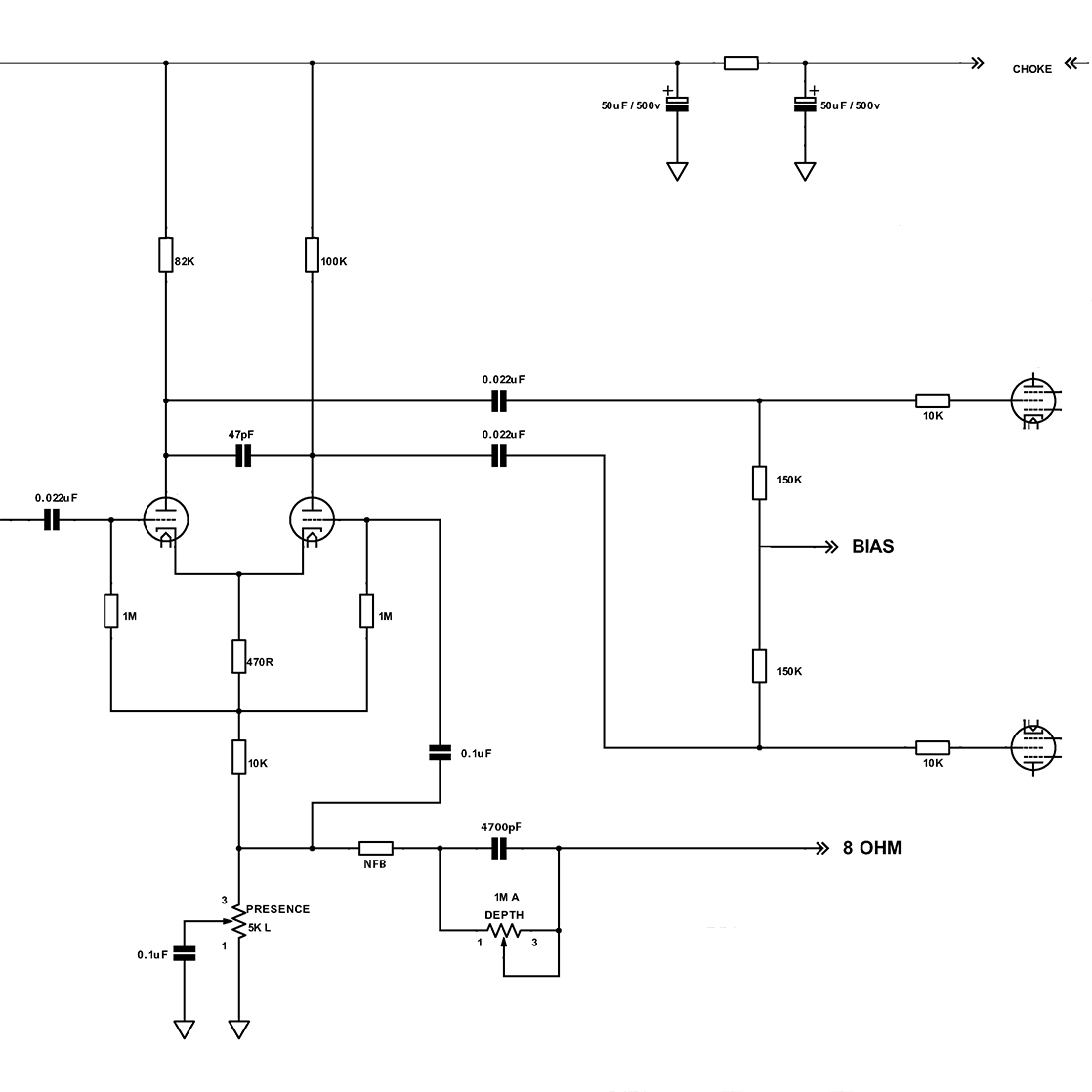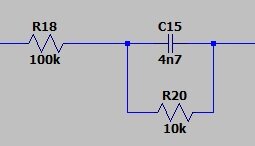FourT6and2
Well-known member
I'd like to discuss the pros/cons and theory behind each of these three presence circuits. Amp is a 50-watt JCM800 w/Jose mod. But focusing just on presence.
I'm asking because I'm familiar with Arrangement 1 and 2. In #1, the 5K presence pot acts as the end of the PI tail. In #2, a 25K pot is used and the presence cap is in series to ground, rather than parallel. And a 4K7 resistor is used to end the tail. But what about Arrangement #3? At first glance it appears to be a mistake. As though someone wired it up by accidentally combining the first two. But... I want to give the amp builder the benefit of the doubt and assume maybe I'm just not understanding something. And maybe the builder did it intentionally.
Arrangement 1

Arrangement 2

Arrangement 3

I'm asking because I'm familiar with Arrangement 1 and 2. In #1, the 5K presence pot acts as the end of the PI tail. In #2, a 25K pot is used and the presence cap is in series to ground, rather than parallel. And a 4K7 resistor is used to end the tail. But what about Arrangement #3? At first glance it appears to be a mistake. As though someone wired it up by accidentally combining the first two. But... I want to give the amp builder the benefit of the doubt and assume maybe I'm just not understanding something. And maybe the builder did it intentionally.
Arrangement 1

Arrangement 2

Arrangement 3



